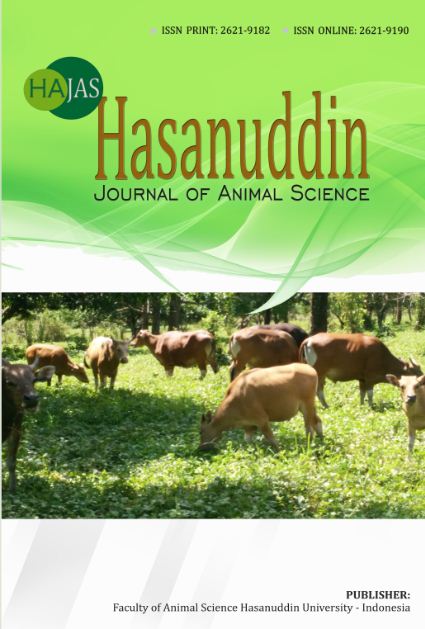Antioxidant Activity, Organoleptic Quality of Salted Eggs with Pandan Leaves Addition
Abstract
This research aimed to study salted eggs' antioxidant activity and organoleptic quality by adding Pandan leaves with different concentrations. The research used a Completely Randomized Design (CRD), four treatment levels, and three replications, adding pandan leaf levels (%) 0.15, 30, and 45, respectively. Measuring the organoleptic quality of salted eggs uses a Likert scale. Testing for antioxidant activity using the DPPH (2,2-diphenyl-1-1 pircryhydrazhyl) method. The level of addition of pandan leaves had a very significant effect (P<0.01) on antioxidant activity and a significant effect (P<0.05) on the IC50 of salted eggs. The antioxidant activity and IC50 value of salted eggs in all treatments produced an IC50 of less than 50 ppm (powerful antioxidant). The addition of 15% pandan leaves was the best treatment in terms of color, texture, preference, and taste, while for aroma, the best quality was the addition of 45% pandan leaves. From this research, the best treatment for salted eggs is adding 15% pandan leaves.
Keywords: Salted egg, pandan leaves, organoleptic quality, antioxidant activity
Downloads
Published
Issue
Section
License

This work is licensed under a Creative Commons Attribution-NonCommercial 4.0 International License.











